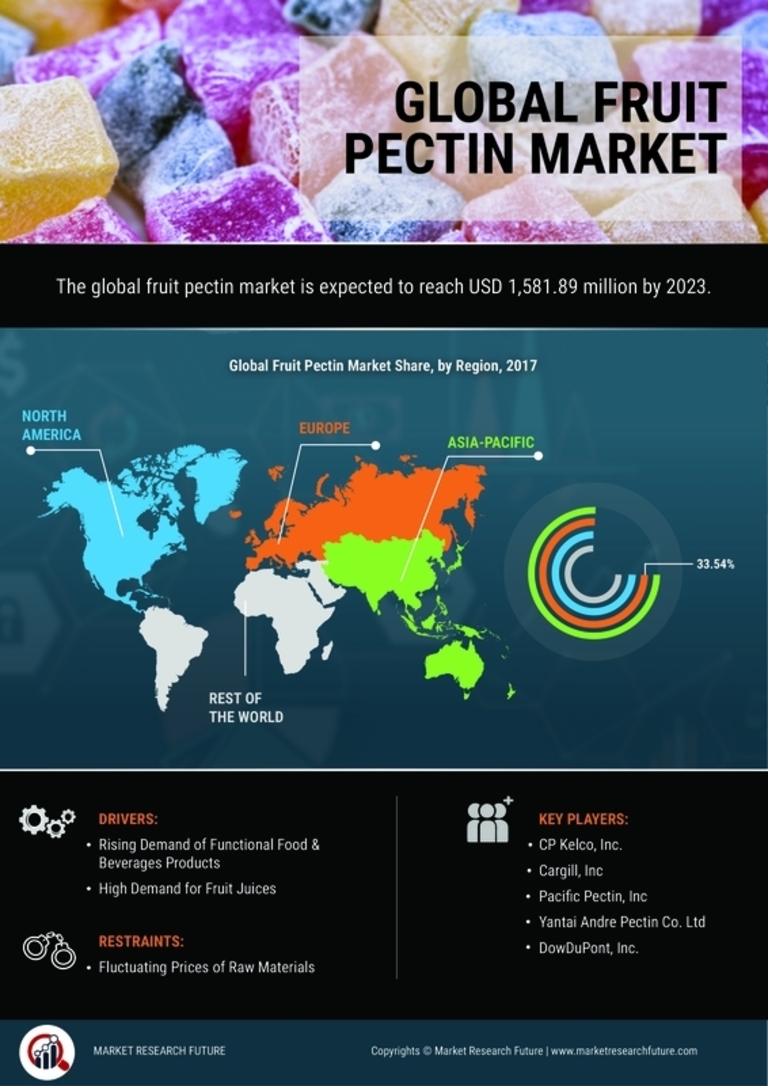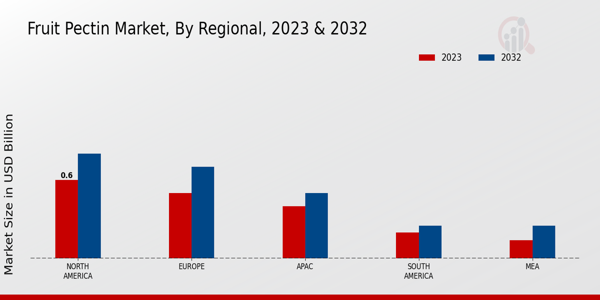Emerging Markets and Globalization
The Global Fruit Pectin Market Industry is experiencing growth due to the emergence of new markets and the effects of globalization. As developing countries witness an increase in disposable income and changing dietary habits, the demand for processed food products, including those containing fruit pectin, is on the rise. Globalization facilitates the exchange of ideas and products, allowing fruit pectin manufacturers to reach broader markets. This trend is likely to enhance the market presence of fruit pectin in various regions, contributing to the overall growth of the industry. The expansion into emerging markets presents significant opportunities for the Global Fruit Pectin Market Industry.
Market Trends and Growth Projections
The Global Fruit Pectin Market Industry is characterized by various trends and growth projections that indicate a positive outlook. The market is expected to grow from 1.87 USD Billion in 2024 to 2.77 USD Billion by 2035, demonstrating a robust growth trajectory. The compound annual growth rate of 3.64% from 2025 to 2035 suggests a steady increase in demand for fruit pectin across multiple applications. These trends reflect the industry's adaptability to changing consumer preferences and the ongoing innovation in product development. As manufacturers continue to explore new uses for fruit pectin, the market is poised for sustained growth in the foreseeable future.
Rising Demand for Natural Ingredients
The Global Fruit Pectin Market Industry experiences a notable surge in demand for natural ingredients, driven by increasing consumer awareness regarding health and wellness. As consumers gravitate towards clean-label products, fruit pectin, derived from fruits, aligns well with these preferences. This shift is evident in the food and beverage sector, where fruit pectin serves as a natural thickener and stabilizer. The market is projected to reach 1.87 USD Billion in 2024, reflecting the growing inclination towards healthier alternatives. This trend is likely to bolster the Global Fruit Pectin Market Industry as manufacturers adapt to evolving consumer expectations.
Regulatory Support for Natural Additives
The Global Fruit Pectin Market Industry is positively impacted by regulatory support for natural additives in food products. Governments worldwide are increasingly promoting the use of natural ingredients, which enhances the marketability of fruit pectin. Regulatory bodies are establishing guidelines that favor the inclusion of natural thickeners and stabilizers, thereby creating a conducive environment for the growth of the fruit pectin market. This regulatory landscape encourages manufacturers to innovate and develop new applications for fruit pectin, further driving market expansion. As a result, the Global Fruit Pectin Market Industry is likely to witness sustained growth in the coming years.
Expansion of the Food and Beverage Sector
The Global Fruit Pectin Market Industry benefits from the continuous expansion of the food and beverage sector. With the increasing production of jams, jellies, and fruit-based products, the demand for fruit pectin is expected to rise correspondingly. The versatility of fruit pectin in various applications, including dairy products and confectionery, further enhances its market potential. As the industry evolves, manufacturers are likely to innovate and introduce new products that utilize fruit pectin, thereby driving market growth. By 2035, the market is anticipated to reach 2.77 USD Billion, indicating a robust trajectory fueled by the food and beverage industry's expansion.
Health Benefits Associated with Fruit Pectin
The Global Fruit Pectin Market Industry is significantly influenced by the health benefits associated with fruit pectin consumption. Research suggests that fruit pectin may aid in digestion and cholesterol management, appealing to health-conscious consumers. This growing awareness of the functional properties of fruit pectin is likely to drive its incorporation into dietary supplements and functional foods. As consumers increasingly seek products that offer health benefits, the demand for fruit pectin is expected to rise. This trend may contribute to a compound annual growth rate of 3.64% from 2025 to 2035, reflecting the potential of fruit pectin in the health and wellness sector.


















